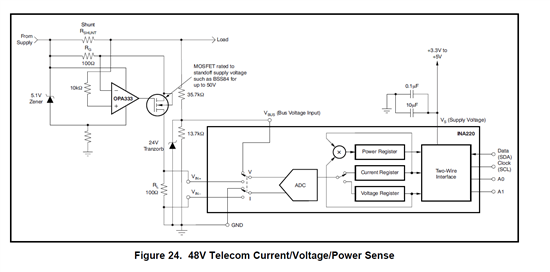Dear e2e,
I am looking to use the INA219 as a system indicator in order to monitor a battery-powered audio amplifier. The battery is as 12V system, which fits the INA219 fine. However, the output of the power supply to the audio amplifier produces about 35V(TBD), and the INA219 only measures up to 26V. Is it possible to extend the range of the device by e.g. passing the shunt resistor readings(which are around 35V) through a voltage divider before passing them on to the INA219? Obviously one would have to take this issue into account when processing the readings from the registers, but is it practically possible? The INA219 has an input impedance of about 320kOhm, so I was wondering if a voltage divider consisting of e.g. 20kOhm resistors would be suitable. What are your thoughts on this? Do you have any other ideas as to how one can extend the range?
Thank you in advance,



